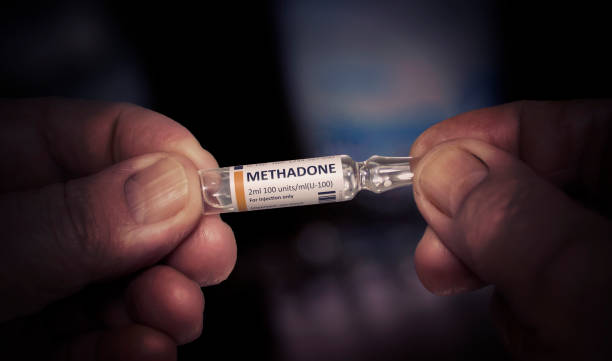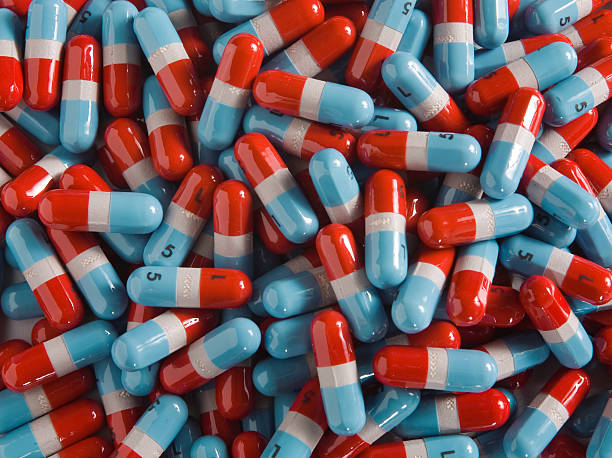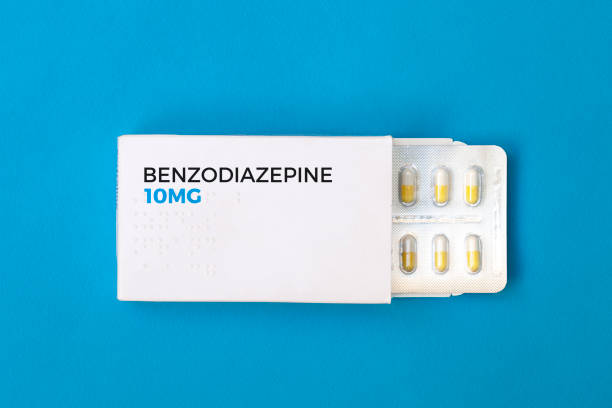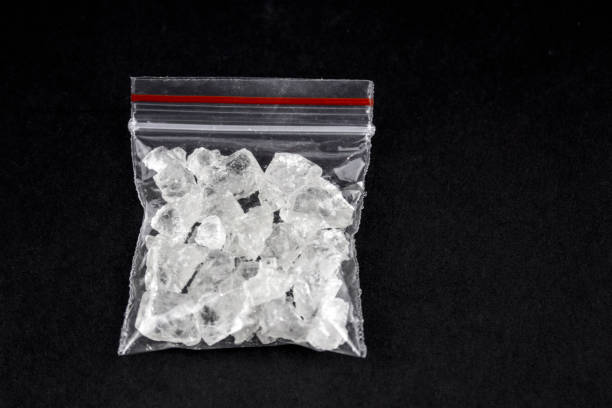
What Are the Hardest Addictions to Break?
November 15, 2021
There are many different drugs that can elicit different sensations, including prescription and illegal drugs. Most drugs can give users a false sense of security. They can cause calming, relaxed moods or high energy, and even feelings of euphoria. These substances can make users feel empowered, which can lead to abuse or addiction. Are there substances more likely to be misused or addicted? This article will discuss the most addictive drugs and hardest to quit.
It is important to seek professional help if you or someone you care about are struggling with addiction, misuse, or overuse of any substance, including alcohol and prescribed medications. There are many options when looking for a luxury rehab center which offers dual-diagnosis to assist clients with the traumatic events that may be contributing to their addiction.
Alcohol
Alcohol is the most difficult addiction to overcome. It is estimated that close to one hundred million Americans have dealt with alcohol-related disorders. Although alcohol may not be viewed as dangerous, many people are unaware of its dangers. However, the severity of addiction in the US and the withdrawal symptoms make it clear that alcohol addiction is the most difficult to overcome.
Chemical reactions in the brain are caused by ethanol. Chronic alcohol abuse can cause brain dysfunction. To feel normal, it will require the substance. The brain sends messages that are affected by neurotransmitters. They tell the body what it should do. The brain will be calmed down by inhibiting neurotransmitters. It helps people feel calm and balanced. Alcohol can affect certain neurotransmitters, which creates addiction. These include GABA and dopamine.
People can also become dependent on alcohol for other reasons. One possibility is that alcoholism runs in the family. This makes it more likely for someone to become addicted. Societal pressure could also play a role. Alcoholism is a common problem because of stress, peer pressure, mental health issues, and easy accessibility.

Heroin
Heroin is not only addictive but also one of the most dangerous drugs. Heroin can be fatal if taken five times per day. It also has devastating psychological and physical side effects.
Heroin is an opioid that blocks pain and produces euphoria. The drug binds with opioid receptor cells. The body transforms heroin into morphine, which gives people a high level of pleasure and relaxation. This is why heroin addicts continue to abuse it. The brain adjusts when a person has been using heroin for a long time. Tolerance is when the brain becomes more comfortable with higher doses of opioids.
Once someone gains a high tolerance, the user will need to take more heroin to get high. A person suffering from dependency will get a feeling of nausea, restlessness, or shakiness when they have not consumed the substance they are addicted to. A person might also feel cold sweats, tremors, diarrhea, anxiety, agitation, pain, and more.
This happens because the brain is trying to find balance and restore normal levels of opioids. Soon, addiction can develop from dependence. The addict will use heroin uncontrollably, regardless of the pain and suffering. If there isn’t any heroin, severe cravings can occur.

Cocaine
Although it is not as common as it used to be in the 1980s and 1990s, millions of Americans still suffer from cocaine addiction. People who use cocaine recreationally or at work can quickly become dependent on its positive effects.
Our brain cells will recycle hormones like serotonin or dopamine in their cycle. These neurotransmitters are responsible for how we feel pleasure, desire, and motivations. The signals are sent out by brain cells and then taken up by the receptors of that cell. This normal brain process is stopped by cocaine. Cocaine can also alter serotonin levels, which are what balance our moods.
Cocaine blocks dopamine absorption, causing it to stick around in your brain which causes a high level of euphoria. The brain can’t make its own dopamine if the cocaine wears off quickly and the dopamine has been absorbed. This can lead to depression, exhaustion, and mood swings. The likelihood of the user using cocaine is greater if they have more access to it. This is called reinforcement.
It has been shown that cocaine addiction can alter the genetics of an individual, which can lead to physical dependence. The effects of cocaine on the brain start to occur in a matter of seconds, but the high lasts only a short time. Cocaine travels quickly from the injector to the brain when it is smoked or injected which causes a rapid dependence. The effects will be stronger, but shorter-lasting. Although it is also short-lived, the effects of snorting cocaine last a little longer.

Cigarettes
Cigarette smoking is a very difficult addiction to break. Millions of Americans still struggle with nicotine addiction, despite numerous public awareness campaigns and antismoking laws. All signs of addiction to cigarettes include a strong craving for nicotine and irritability if you go too long without smoking.
Nicotine in cigarettes can be addictive just like heroin. The nicotine in cigarettes can alter the brain by creating more nicotine receptors that allow for those extra doses. Withdrawal symptoms occur when the brain stops receiving nicotine. These symptoms can include anxiety, irritability, and strong cravings.
Nicotine’s rapid brain absorption is what causes the physical addiction. Nicotine temporarily elevates a person’s mood and heart beat. The body will crave another cigarette since the relaxation and elevated mood do not last for long. Nicotine withdrawal symptoms can quickly set in. To get their addiction fix, many people will take 20 doses of nicotine daily.

Prescription Painkillers
It is clear that Americans are becoming more dependent on prescription drugs, mainly due to the fact that taking prescription drugs is more accepted in society versus many other drugs. However, these painkillers are still used by many to get a high. Vicodin and OxyContin, for example, create a sense of well-being during use and withdrawal symptoms which are key signs of substance abuse.
It is thought that the rise in opioid prescriptions has played a significant role in addiction. Prescription pain relief drugs became the gateway drug for heroin, resulting in a 45% rise in heroin-related deaths. Vicodin, Percocet and Codeine all have the same effects as heroin. If a prescription is stopped, a person may seek out heroin on the streets because it is more affordable and easier to find.
The effects of prescription opioid painkillers can be intense and vary depending on how they are used. People may also inject prescription painkillers or snort them. The GABA chemical is released when the opioid receptor is attached. This controls the release of dopamine. Dopamine flooding to the brain causes the high, similar to heroin. Prescription painkillers have been a huge factor in the opioid epidemic.

Methadone
Ironically, many addiction treatment programs make use of methadone to treat withdrawal symptoms from hard drugs. This may appear to resolve the problem in the short-term but it may only lead to a new type of addiction. It can take up to six weeks to withdraw from methadone. It is not recommended to try withdrawing from methadone or other hard drugs by yourself.
Methadone can lead to physical dependence, even though it isn’t as addictive as other opioid-based drugs. However, methadone has the same effects on brain structure and function as addictive opioids. A person should continue to receive therapy even if they are gradually being taken off methadone. It can be very effective but methadone abuse can also lead to dependence.
Methadone dependence is unlikely to occur if methadone is taken as prescribed. Addiction usually occurs when methadone is taken in higher doses to achieve psychoactive effects. The act of abusing the drug includes swallowing, chewing, or injecting it. People may use the drug to relieve stress and their cravings. They will continue to use it, regardless of its negative effects.

Amphetamines
Amphetamines can be described as a stimulant drug that includes methamphetamines. They can boost energy, mood, confidence, and even increase your self-esteem when taken. They can also suppress one’s appetite.
Adderall is becoming more popular because of the many ADHD patients. These drugs are more addictive when they’re abused by someone without the disorder. It is one reason why it is so popular in America today.
Synthetic drugs called amphetamines can be used to stimulate the central nervous systems. People will experience increased energy and other body functions will be more efficient because of this. The effects are similar to cocaine but with a more satisfying high.
All types of amphetamines can be addictive, but methamphetamines are the most powerful. They are addictive but not legal. This drug was created from amphetamines that were previously available as nasal decongestants.

Benzodiazepines
Benzodiazepines, which are sedative drugs, are among the most dangerous prescription drugs that you can abuse. This class of drugs can become addictive when used to self-medicate anxiety and sleep. People with panic attacks, anxiety, or clinical stress will often be prescribed benzodiazepines such as Valium and Xanax. There are over 15 types of benzodiazepine medication that can be used for various medical purposes.
Benzodiazepines cause brain surges of dopamine which leads to a shift in dopamine-producing neurons in the body. Dependence is caused by the pleasure-inducing effects of these drugs. Benzodiazepine can cause cell damage that will reduce dopamine flooding. Even great dopamine spikes can be caused by temporary dopamine surges. According to researchers, benzodiazepines can build up in the body. They alter brain receptor function and structure. This can cause excitable surges that can intensify the dopamine rushes.

Crystal Meth
Crystal meth, a man-made stimulant drug that affects the central nervous system, has a high addiction rate. It also has a long-lasting negative effect on your brain. It is one of the most dangerous drug addictions.
Methamphetamine and norepinephrine (along with other neurotransmitters), are released when you take meth. The user experiences euphoric feelings, increased energy, feelings of invincibility, and other psychoactive effects.
Research on the long-term and short-term effects of methamphetamine usage has shown that it can have serious neurological side effects. The high can cause a feeling of well-being and energy, but the crash can lead to severe depression and exhaustion. This can lead to a craving for the drug, which can quickly turn into an addiction.
Meth is a party drug that can keep clubbers up until the early hours. People who take methamphetamine don’t realize how it affects their brain chemistry. An addiction to meth can have a lasting, irreversible effect on the mind and body.
Many people use methamphetamine recreationally to enhance their sleep or to lose weight. Crystal meth addiction can lead to a craving for the high. Others may think they cannot live without crystal meth or manage their lives.

Process Addictions
Although most addictions are accompanied by withdrawal symptoms, this is not always true. Process addictions, also known as behavior addictions, can lead to all the social and psychological consequences of addiction without any physical signs of dependence.
Psychological dependence on gambling, sex, food, shopping, and gaming are some of the most prevalent process addictions. Dopamine levels can be increased by gambling and shopping, which are the same things that other substances do.
Food addiction can be dangerous and unhealthy. Eating is something that we all need to do. People with a food addiction can eat whatever they want, even when they aren’t hungry. They will also eat a lot. They can cause havoc in their lives and have no way to stop. These impulsive behaviors can lead to mental and physical health problems.
This form of addiction is included in our list of most difficult addictions because of two reasons. This is because people might not be able to stop their behavior despite facing severe consequences. Secondly, this addiction can often go untreated.

Conclusion
These drugs are addictive and can be difficult to quit and the threat of addiction in our future is dangerous. With professional treatment, you can overcome all of the addictions mentioned in this article. No matter what addiction you have, drug and alcohol rehabilitation can offer hope for the future. The support and therapy you require will help you understand your addiction better. You can choose between intensive outpatient or inpatient treatment. Professional addiction treatment will give you the best chance for full recovery.
It doesn’t really matter if you have to stop taking one of the most addictive prescription drugs or one of the easiest. Addiction treatment can help you get rid of the harmful effects of alcohol and drugs. Contact a reputable rehab center if you or a loved one is struggling with substance abuse.
